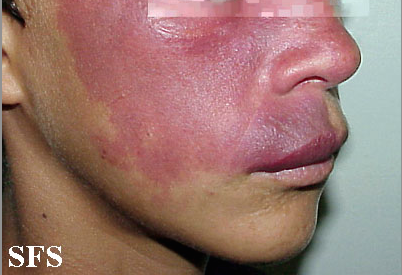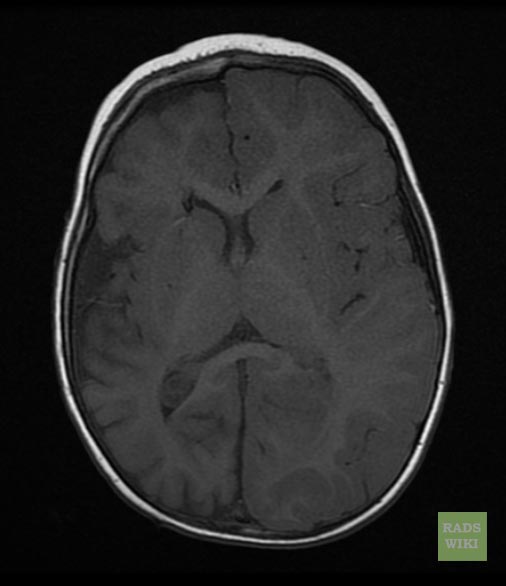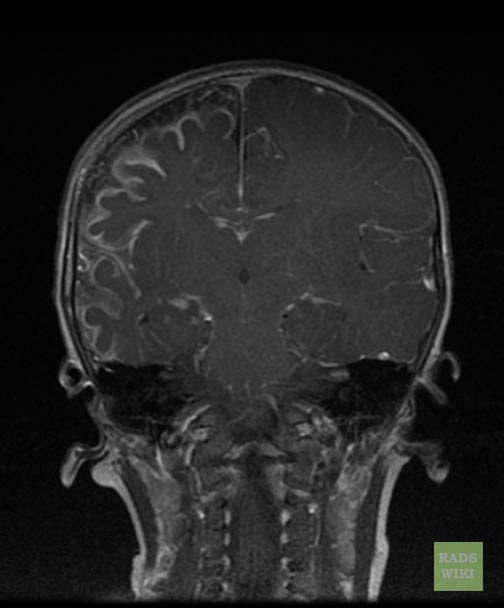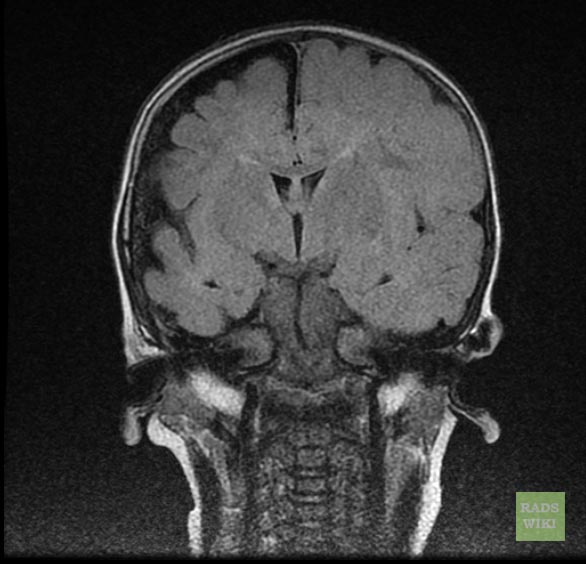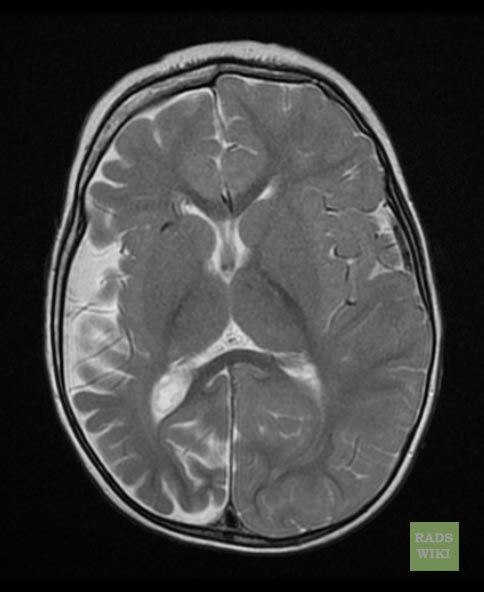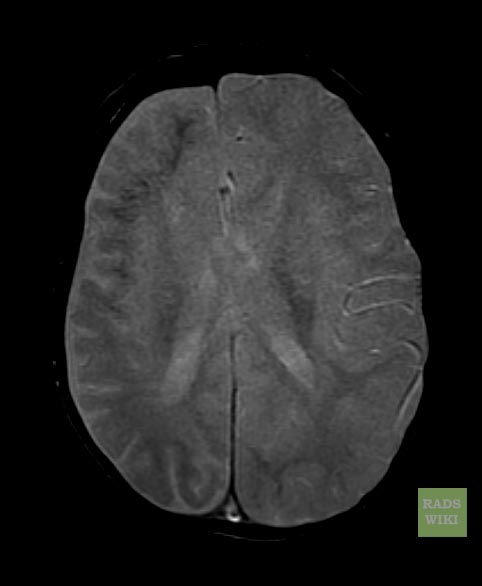Sturge-Weber syndrome
Editor-In-Chief: C. Michael Gibson, M.S., M.D. [1]; Associate Editor(s)-in-Chief: Jesus Rosario Hernandez, M.D. [2].
Synonyms and keywords: Encephalotrigeminal angiomatosis.
Overview
Sturge-Weber syndrome, sometimes referred to as encephalotrigeminal angiomatosis, is an extremely rare congenital neurological and skin disorder. It is one of the phakomatoses, and is often associated with port-wine stains of the face, glaucoma, seizures, mental retardation, and ipsilateral leptomeningeal angioma. It is caused by an arteriovenous malformation that occurs in the cerebrum of the brain on the same side as the physical signs described above. Normally, only one side of the head is affected.
It is an embryonal developmental anomaly resulting from errors in mesodermal and ectodermal development. Unlike other neurocutaneous disorders (phakomatoses), Sturge-Weber does not have a hereditary tendency but occurs sporadically.
Diagnosis
Physical examination
Gallery
Skin
Head
Symptoms
Sturge-Weber syndrome is indicated at birth by seizures accompanied by a large port-wine stain birthmark on the forehead and upper eyelid of one side of the face. The birthmark can vary in color from light pink to deep purple, and is caused by an overabundance of capillaries around the ophthalmic branch of the trigeminal nerve, just beneath the surface of the face. There is also malformation of blood vessels in the pia mater overlying the brain, on the same side of the head as the birthmark. This causes calcification of tissue and loss of nerve cells in the cerebral cortex. Neurological symptoms include seizures that begin in infancy and may worsen with age. Convulsions usually happen on the side of the body opposite the birthmark, and vary in severity. There may be muscle weakness on the same side. Some children will have developmental delays and mental retardation; most will have glaucoma (increased pressure within the eye), which can be present at birth or develop later. Increased pressure within the eye can cause the eyeball to enlarge and bulge out of its socket (buphthalmos). Sturge-Weber syndrome rarely affects other body organs.
MRI
-
Sturge-Weber syndrome
-
Sturge-Weber syndrome
-
Sturge-Weber syndrome
-
Sturge-Weber syndrome
-
Sturge-Weber syndrome
Treatment
Treatment for Sturge-Weber syndrome is symptomatic. Laser treatment may be used to lighten or remove the birthmark. Anticonvulsant medications may be used to control seizures. Doctors recommend yearly monitoring for glaucoma, and surgery may be performed on more serious cases. Physical therapy should be considered for infants and children with muscle weakness. Educational therapy is often prescribed for those with mental retardation or developmental delays, but there is no complete treatment for the delays. Brain surgery involving removing the portion of the brain that is affected by the disorder can be successful in controlling the seizures experienced so that the patient has only a few seizures that much less intnse than pre-surgery. One of the hospitals that has successfully completed this procedure is Shands at the University of Florida.
Prognosis
Although it is possible for the birthmark and atrophy in the cerebral cortex to be present without symptoms, most infants will develop convulsive seizures during their first year of life. There is a greater likelihood of intellectual impairment when seizures start before the age of 2 and are resistant to treatment.
Eponym
It is named for William Sturge and Frederick Parkes Weber.[1][2][3]
References
- ↑ Template:WhoNamedIt
- ↑ W. A. Sturge. A case of partial epilepsy, apparently due to a lesion of one of the vasomotor centres of the brain. Transactions of the Clinical Society of London, 1879, 12: 162.
- ↑ F. P. Weber. Right-sided hemi-hypertrophy resulting from right-sided congenital spastic hemiplegia, with a morbid condition of the left side of the brain, revealed by radiograms. Journal of Neurology and Psychopathology, London, 1922, 3: 134-139.
Pictures
Template:Phakomatoses and other congenital malformations not elsewhere classified
